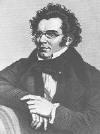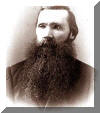
Family Biography
Emil Franz Herrmann b. 03/10/1851 d.
23/12/1911
 In
Germany
1866 there was the ‘Seven Weeks War’ also called ‘Austro-Prussian War,’ which
was between In
Germany
1866 there was the ‘Seven Weeks War’ also called ‘Austro-Prussian War,’ which
was between Prussia on the one side and Austria, Bavaria, Saxony, Hannover, and
certain minor German states on the other. Because of superior weapon technology
of the period, it ended in a Prussian victory, which meant the exclusion of
Austria from Germany. A Prussian detachment, known as the army of the Main,
meanwhile dealt with the forces of Bavaria and other German states that had
sided with Austria.
Germany’s breach loading rifles vs. Austria’s mussel loading rifles gave Germany
the victory. Prussia on the one side and Austria, Bavaria, Saxony, Hannover, and
certain minor German states on the other. Because of superior weapon technology
of the period, it ended in a Prussian victory, which meant the exclusion of
Austria from Germany. A Prussian detachment, known as the army of the Main,
meanwhile dealt with the forces of Bavaria and other German states that had
sided with Austria.
Germany’s breach loading rifles vs. Austria’s mussel loading rifles gave Germany
the victory.
In 1870 there was the
Franco-Prussian War
or
Franco-German conflict between France and
Prussia that signaled the rise of German military power and imperialism. It was
provoked by Otto von Bismarck (the Prussian chancellor) as part of his plan to
create a unified German Empire. The war was fought from 1870 to 1871.
Emil Franz Herrmann was between the ages of 19 and 20
years old during the Franco-Prussian conflict. The country had been in upheaval
for a period of years. It is believed that Emil Franz Herrmann left Germany
after King Wilhelm I assumed power of the unified Germany 18 January 1871.
It is believed that he may have potentially served in the Königreich
Preußen military unit.
There were many factions within Germany that did not want
to see a Prussian takeover of the country develop. Some of those provinces that
opposed King Wilhelm I were centered in Prussian territories, such as Saxony,
Hannover and other minor states. Provinces that once sided with Austria just 4-5
years before were now forced to join the newly appointed Kaiser. This left those
who were in the military of the Austrian sided provinces in a precarious
situation. This was the beginning of the 1st Reich.
According to Emil
Franz Herrmann naturalization application he states that he first entered the
United States on or about 08 September 1874. This would have made him nearly 23
years old when he first stepped foot on American soil. Family stories state that
Emil Franz Herrmann fled Germany by way of going through the black forest region
of southern Germany’s province of Baden or the imperial territory of
Alsace-Lorraine and then made his way to North Africa where he found passage on
a ship heading to South America. He then made his way to the United States and
eventually on to Minnesota. The Kaiser had appointed troops to reinforce
the front in Alsace-Lorraine to ensure that the French would not retake it back.
This is how Emil left through "Der Schwarzwald" (The Black Forest) as it
is believed he was stationed there as part of the military front to protect it
from the French.
"Christian
Heinrich Reinking b. 1835 d. 1911"
 St. Johns Lutheran Church was co-founded by ten men, one
being Christian Heinrich Reinking. Christian married Katharina Hagemann, the
daughter of Christian Hagemann. Christian Heinrich Reinking and Katharina Hagemann both
came from Germany. Christian came from Evangelisch,
Preußisch-Ströhen, Westfalen, Pruessen where the Reinking farm is still in
operation to this very day.
Katharina Hagemann says she came from Württemberg, Germany in the 1860 census
and she says she came from Oldenburg, Germany in the Minnesota State census of
1875. They are at opposite ends of Germany one being due north and the other
being due south. This still requires more investigation to determine the exact
location of her birth. Christian and Katharina had 10 children and they both
immigrated in 1859. It is not known whether they were already married or whether
they met in the United States and married. St. Johns Lutheran Church was co-founded by ten men, one
being Christian Heinrich Reinking. Christian married Katharina Hagemann, the
daughter of Christian Hagemann. Christian Heinrich Reinking and Katharina Hagemann both
came from Germany. Christian came from Evangelisch,
Preußisch-Ströhen, Westfalen, Pruessen where the Reinking farm is still in
operation to this very day.
Katharina Hagemann says she came from Württemberg, Germany in the 1860 census
and she says she came from Oldenburg, Germany in the Minnesota State census of
1875. They are at opposite ends of Germany one being due north and the other
being due south. This still requires more investigation to determine the exact
location of her birth. Christian and Katharina had 10 children and they both
immigrated in 1859. It is not known whether they were already married or whether
they met in the United States and married.
Christian came to the United States with his brother
Hermann Reinking. Per family story they left their parents and
some siblings in the Luxembourg-Flanders area where they moved from Preußisch-Ströhen
and came to the United States to make a new life.
After Christian came to Minnesota he and Katharina
had three children when the U.S. Army drafted him into duty for the Civil
War. Christian was wounded and received a pension from the military. The U.S.
Army renamed him from the German Reinking to the English version of Rankin. He received his
pension under the name Rankin. It was not uncommon for German immigrants to endure
various persecution including name changing. The family could not understand why
the military would do this.
Emil Franz Herrmann met Wilhelmine Christinne Catharine
Reinking at St. Johns Lutheran and after approximately 4 to 5 years they married.
She was the third child of Christian Heinrich Reinking and Katharina Hagemann.
After marrying, Emil and Wilhelmine lived in the Corcoran area and had
2-3 children. Later they moved to the Anoka area where they homesteaded and had
another 11-12 children. Nearly all of the Herrmann children were baptized at St.
Johns Lutheran.
Emil was a farmer in Anoka and also served as truant
officer for the city of Anoka. Emil and Wilhelmine lived in Anoka until after Emil’s death
which was 23
December 1911. Wilhelmine then moved from the farm into Minneapolis where she
became a professional cook for a well known railroad tycoon in Minneapolis.
The children of Emil and Wilhelmine spread
throughout the greater Minneapolis-St. Paul area raising their own families as
recorded in this account.
In 1911, Wilhelmine lost her husband Emil Franz and both
of her parents, Christian and Katharina, who both died 2-3 months apart. She was left
with at least 6 children still at home when Emil died.
Note: If
you wish to have a full rendition of the
family Biography please write to:
Family Biography
| 